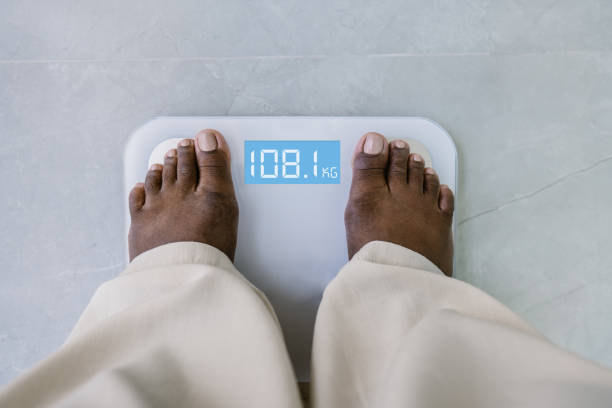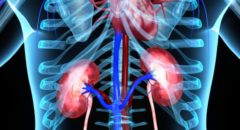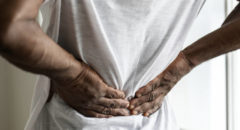
According to the Centers for Disease Control and Prevention (CDC), 33 percent of the people on Medicare who have kidney disease are Black Americans. Furthermore, Black people are four times more likely to have their condition progress to kidney failure than their white counterparts. Based on these numbers, it’s unsurprising that up to 35 percent of those who are undergoing regular dialysis are also Black. That’s why it’s good for all Black people to know how to remain healthy while receiving this life-saving treatment.
RELATED: Top Tips For Living Well When You’re On Dialysis
5 Ways to Manage Fluid Intake
1. Divide and Conquer
While the number can vary, most people on dialysis shouldn’t drink more than a liter of water per day. Though that’s almost a quarter of what your average person should have, it’s imperative to stay within the limit that your doctor sets. One easy way to do that is to sip small quantities of what you’re allowed so that you remain hydrated during the day. There are different ways to do this. You can divide the allowed amount into equal portions that you can have every three to four hours, or you can keep a water journal where you track how much you’ve had.
2. Stick to Your Medical Regimen
Depending on what you need, your doctor may prescribe diuretics or water pills. These pills are meant to increase your urine output so you can get rid of fluid that’s built up in your body. If you don’t take them as prescribed, you may not get all the benefits of the medication.
RELATED: 10 Places Where Sodium Is Hiding
3. Reduce Your Sodium Intake
It’s true that you need sodium in your diet to balance the fluid you consume. However, too much sodium can increase your thirst and encourage fluid retention. Your best bet is to reduce how sodium you take in by limiting its presence in your diet. This can mean reducing salt and other seasonings that have a high sodium content. When cooking, opt for natural herbs that add to the flavor of your meals, like fresh onion, fresh garlic, onion powder, ginger, and thyme. Lemon juice and vinegar can add some zest to your dishes as well.
Since many processed foods and sauces can have a high level of sodium, you should pay attention to their nutrition labels. These labels will clearly state how much sodium is in the products so that you’ll know what to avoid.
4. Find Better Water Replacements
Just because you can’t have too much water, it doesn’t mean you lose your ability to feel thirst. Unless you’ve gotten clearance from your doctor to drink more water because you’re sweating more than usual, you need to replace fluids with other items that allay thirst. Hard candies like mints or sour balls can stimulate saliva production while reducing feelings of thirst. If you want a little more water, ice is an excellent substitute because it has half the water by volume. That means you’ll feel like you’re drinking a lot, but that’s not the case. Another option is frozen fruits like grapes and blueberries.
5. Know Your Dry Weight
Your dry weight is what you weigh without the excess fluid. You can usually get this number after a session of dialysis. Generally, doctors don’t recommend having more than 2.2 pounds or a kilogram of fluid gain in a day. If you weigh yourself and notice more than that, it may be a sign that you’re drinking too much. You should talk to your doctor if it happens repeatedly.
RELATED: Dialysis Do’s and Don’ts: 10 Tips to Help You Adjust

Why Your Fluid Intake is Important
When your kidneys are healthy, they effectively balance the level of fluids in your body. They can filter waste from your blood and take liquid from the waste your body needs to excrete. With late-stage kidney disease, your kidneys are no longer able to do this, so you can end up with a buildup of fluid in your body. Of course, this is not the same for everyone.
Some people lose their ability to filter out fluids but can still urinate. For others, their kidneys will no longer filter out fluid or encourage their body to produce urine. In either case, you still need to watch your fluid intake. It’s important to note that fluids don’t only mean water and beverages. You should also pay attention to fruits, vegetables, and foods like gravy that tend to have a high water content.
If you don’t control how much fluid you consume, you can overload your system between dialysis sessions. You can also develop so much fluid buildup that a single dialysis session may not be enough to lower it to an acceptable level. At that point, your doctor can recommend additional medication to help your body shed the excess liquid.
Excess fluid can accumulate in your chest, putting pressure on your heart and lungs. As a result, you may have trouble breathing and get tired easily. It can also damage your heart and lungs if you don’t get it under control. Additionally, the buildup of fluid may elevate your blood pressure and increase your risk of having a stroke. Overall, though, the additional fluid can range from being uncomfortable to painful.
RELATED: 6 Foods You Should Avoid if You’re on Dialysis

Signs You’re Drinking Too Much
A few signs that you’re drinking too much liquid include shortness of breath, unexplained headaches, cramping, and high blood pressure that isn’t in line with your regular readings. Too much water also means that fluid will likely amass wherever it can. This can show up in swelling in your feet, ankles, wrists, and face. If it accumulates in your chest, you may see some swelling in your stomach and feel tightness in your chest.
If you start feeling any of these symptoms, you need to let your doctor know, as there isn’t much you can do on your own to alleviate them. If you follow the doctor’s advice and have had dialysis, let your doctor know if the fluid buildup returns, regardless of what you do.
Even if you’re being careful, water can be lurking in places you don’t expect. It’s therefore a good idea to know the signs that there’s a buildup of fluid in your body. Some foods that contain high water content include watermelon, strawberries, oranges, skim milk, broths and soups, lettuce, cantaloupe, cucumber, zucchini, celery, tomatoes, bell peppers, plain yogurt, cauliflower, cabbage, grapefruit, coconut water, and cottage cheese. Doctors also advise that you limit ice cream and sorbets.
However, that doesn’t mean you shouldn’t drink anything at all. On the contrary, you have to manage what you drink, as water is still essential to your body’s normal operation. The best place to start is by asking your doctor how much water you’re allowed to drink per day. Once you know that figure, you can focus on drinking a little throughout the day. Eating hard candies can also help you ease your thirst without contributing much to your fluid intake.
When you’re living with kidney disease, dialysis is an unavoidable part of your treatment. However, being on dialysis doesn’t mean you don’t have to watch what you eat and drink. Your fluid intake is one of those aspects of your diet that you have to monitor closely. After talking to your doctor, it will be easy to know how much water you’re allowed to consume.









